ArtMarket® Insight - what's trending on the art market
ArtMarket® Insight contents
Miquel Barceló – back to the matter [25 Jul 2007]
There is something timeless about Miquel BARCELO’s work. The Spanish artist explores fundamental themes: the passage of time and organic metamorphosis. He grinds up matter, plays with impastos, makes gashes in the pictorial surface to which he adds heterogeneous materials. Barceló was fascinated by André Breton, whose idea of ‘rencontre fortuite’ or ‘chance encounter’ (of objects and ideas) certainly inspired his incongruous combinations of paint and sand, ash and remains…
Helmut Newton- Scandal and sophistication [23 Jul 2007]
Helmut NEWTON’s first photographs, taken in the 1930s when he was an adolescent, already testify to his cult subjects: fashion, woman and the portrait. His first success came after the Second World War when he published his work in Playboy and various other magazines and set his style in the 1970s.Thanks to a skilful cocktail of eroticism and voyeurism, power and domination, seduction and proudly assumed “bad taste”, his photos attract some people, shock others but leave nobody indifferent.
Karel Appel – I paint the wildness of my times [16 Jul 2007]
Dutch artist Karel APPEL was a cofounder of the group known as Cobra (1948-1951), named after its member artists’ home cities of Copenhagen, Brussels and Amsterdam. As well as participating in Cobra, Appel continued to produce spontaneous and exuberant art until the end of the 1970s. His instinctive approach to painting is typically expressed as an explosion of colour and a child-like graphical sensibility. Appel juggles materials, plasters on layers of paint, and pulls together found objects that are integrated into his works. Rather than seeking to seduce the viewer he wants to give represent the wildness of his times.
Hermann Nitsch : the aesthetics of soiling [08 Jul 2007]
Hermann Nitsch is considered to be the leading light of Viennese Actionism (1962-1968), a protest movement which aimed to heal the wounds created during the Third Reich. They did this by breaking taboos through group rituals and private ceremonies steeped in blond and excrement. Remaining faithful to his first “happenings”, Nitsch continues his organic and impulsive rhetoric as he reaches his 70s. His paintings in oil, acrylic and blood evoke the sacrificial violence which featured in his Theatre of Orgies and Mysteries.
4023 new artists records in 6 months [04 Jul 2007]
The high-profile sales in New York during May and in London during June confirmed the overall market mood: over the last six months, the number of new price records at auctions is particularly high. Indeed these records are the icing on the cake of a market showing a 28% increase in the average price of art since the start of the year, and +133% over the last ten years. The Artprice Global Index is currently 16% above its 1990 level
Bruce Nauman [02 Jul 2007]
Bruce Nauman was born in Fort Wayne, Indiana, on December 6, 1941. He began by studying music and mathematics at the University of Wisconsin in 1960 before switching to the art department of the University of California, Davis, and graduating with an MFA in 1966. In 1968, Nauman was taken under the wing of gallery owner Leo Castelli and his career took off. By the age of 31 he had his first retrospective show, at Los Angeles County Museum.
‘Contemporary Art – evenings sales’ in London: £140 million [25 Jun 2007]
Having achieved a historic result in this sector on 16 May last in New York ($384,654,400), Christie’s opened the ball of the London contemporary art sales on 20 June with sale proceeds of £67,470,800 in 83 lots. The following day, Sotheby’s outstripped its competitor, selling 66 lots for a total of £72,427,600. In 2006, the total London proceeds of the two auction houses’ contemporary art evening sales amounted to close to £56 million.
Artprice and ADAGP sign an agreement strengthening the digital economy and copyright [24 Jun 2007]
Artprice, the world leader in art market information, and ADAGP, the rights management society with the widest representation in the field of the visual arts, have reached a very special agreement.<%/DESC%>ADAGP specialises in royalty and rights management. It was created in 1953 and represents 48,000 visual artists. Working through its network of sister societies, it collects and distributes its members’ royalties in more than 43 countries.
Return to strength for impressionism at the London auctions [20 Jun 2007]
Supported by an increasingly dynamic London market the ‘Impressionist & Modern Art Evening Sales’ organised by Sotheby’s and Christie’s at their New Bond Street and King Street offices are now as spectacular as in New York. In just 100 lots sold during the two evenings, the auctioneers raised no less than £201 million ($400 million), of which £121 million in the 18 June sale alone organised by Christie’s, a record total for a Fine Art sale in Europe.
Robert Mapplethorpe – Beauty and the devil are one and the same [18 Jun 2007]
The work of Robert Mapplethorpe (1946-1989) has something of a scandalous reputation, the photographer shocking puritanic Americans by putting sexuality at the heart of his artistic universe. He became a photographer in the 1970s, an era of sexual liberation soon to be brought to a halt by the rise of the AIDS epidemic. Mapplethorpe never ceased extolling the human body in meticulous compositions often evoking the cool and strict aesthetic of neoclassical painting.
Anselm Kiefer [10 Jun 2007]
Born in Germany six months before the end of the Second World War Anselm KIEFER began by studying law and romance languages in 1965 at Freiburg in Breisgau, before switching to follow the art courses taught by Peter DREHER and Horst ANTES. He held his first exhibition at the age of 24. In 1970, he went to study under Joseph BEUYS.
Chinese Contemporary Art Market – Cultural revelation [31 May 2007]
Speculation is showing no signs of slowing and auction sales are ever stronger, and prices ever higher. The price appreciation has been staggering for the generation of young Chinese artists and the number of investors continues to grow. It often takes only a few years for a Chinese artist to see a tenfold price increase, as with ZHANG Xiaogang or CAI Guoqiang to cite just a couple of examples. Symbolic of the price increases: the ten most successful auctions of contemporary Chinese art have been recorded over the past twelve months. In the end, in 2006, 31.3% of the Chinese contemporary artworks sold at auction achieved more than $100,000. Given such price levels, the proceeds on Chinese contemporary art sales increased by a factor of ten in 2006.
Graffiti art- From the street to the museum [23 May 2007]
Historically, graffiti was an underground movement, born to the Hip-Hop rhythm in the American ‘hoods of the 1970s. It is people’s art, rough and ephemeral. Rough because it was created illegally in public spaces. Ephemeral because its lifespan, subject to external constraints, is necessarily limited. The prohibitions which hit this urban art right from its beginnings in Europe could not stop its expansion during the 1980s. At the end of the decade it had become a veritable fashion phenomenon, in the press and on museum walls. Aside from urban buildings, street furniture and public transport, the graffiti artists created works on canvas, paper or street hoardings which are now prized by a growing number of collectors.
Christie’s confirms its leading position in contemporary art [21 May 2007]
The thrill of the New York contemporary art auctions is no longer the thousand dollar sale but those achieving millions of dollars. At the height of the May sales, a work by Mark ROTHKO went for 65 million dollars, becoming the most expensive post-war work in the market. These days the Sotheby’s and Christie’s contemporary art auctions are raising proceeds in excess of those on “Impressionist & Modern Art”. In 138 lots, the 15 and 16 May sales generated, all costs included, 639,528,400 million dollars, compared with 515,012,000 million dollars on 123 lots the previous week in the “Impressionist & Modern Art” sales.
Alberto Giacometti – At the peak of his price [20 May 2007]
Born in October 1901 in Stampa, Switzerland, Alberto Giacometti (1901-1966) moved to Paris in 1922, where he came into contact with the cubists and discovered the formal perfection of traditional African art. From 1930, he was rubbing shoulders with the surrealist movement, met Masson and Breton, read Freud and Bataille, and created symbolic surrealist sculptures exuding violent eroticism. But the death of his father in 1933 was to mark a turning point and the beginnings of a new artistic direction. Giacometti grew to enjoy solitude and returned to portraits, for which he was rewarded with expulsion from the surrealist movement. He embarked on a ten-year search, destroying most of the works he had created and many of his scale drawings, though some were preserved in a matchbox. After the war, Giacometti developed a unique language that found expression in thread-like, pitted silhouettes; these brought him, during his lifetime, an international recognition that has never waned.
Sotheby’s dominates the ‘impressionist and modern’ art sales in New York [15 May 2007]
Sotheby’s managed, as had been hoped, to outpace its competitor Christie’s in the impressionist and modern art sales held on 8 and 9 May 2007, obtaining results which gave it pole position in this round. However, the lead can’t yet be described as significant: $278,548,000 compared with $236,464,000 for sales under the hammer at Rockefeller Plaza.
British pop art [13 May 2007]
In the early sixties pop art invented a new repertoire of images drawn from popular culture. Artists uninhibitedly, and often ironically, lifted images from the worlds of advertising, cinema, comics and the media, effectively juggling with the iconography of the consumer culture of the time. The definition Richard Hamilton gave for his artistic production sets the tone. He wanted his art to be “popular, ephemeral, disposable, cheap, mass produced, spiritual, sexy, clever, fascinating and make lots of money.”
Contemporary Russia – An emerging market [06 May 2007]
After Sotheby’s sale of contemporary Russian art in February and the second edition of the Moscow biennial art fair in March, contemporary Russian art is enjoying considerable effervescence.In historical terms, Russian artists’ freedom to express themselves is a relatively recent phenomenon. For example, in 1974 an exhibition of non-conformists in Moscow was demolished by a State bulldozer. Over recent years the cultural face of the Russian capital has changed radically with the opening of contemporary art centres. Although much of the contemporary work is focused on social and political critiques of the old communist regime, a broad diversification of artistic languages is beginning to emerge. Contemporary Russian art is attracting more and more amateur art collectors; however, for the time being, the majority of professional collectors are still of Russian origin.
Great expectations for New York’s May auctions [02 May 2007]
On 8 November last year, Christie’s New York managed to far outstrip its principal competitor Sotheby’s with a record sale that generated USD 491 million from 78 lots!This year Sotheby’s is planning a spectacular response with its New York sales of ‘Impressionist and Modern Art’ and ‘Contemporary Art’ that it estimates will generate between 416 and 561 millions dollars.
Contemporary Indian art [23 Apr 2007]
Contemporary Indian art is one of the most dynamic segments of the art market with a progression over the last ten years of 480%!Contemporary Indian art has now acquired a considerable standing in the market and is today one of its most speculative segments. According to Artprice’s March 2007 ranking of the most dynamic art movements, it is now in fourth position, just behind English Pop Art.
The leaders of the contemporary art market at Belgian auctions [16 Apr 2007]
In April, Brussels is host to one of the major international contemporary art fairs: Artbrussels. For this, its 25th edition, the fair is bringing together 123 galleries, presenting close to 2000 works and receiving more than 30,000 visitors. This year, the fair is very clearly focused on the notion of “contemporary” with certain galleries being grouped together in a special zone called “First Call”. These galleries have been selected by committee of art collectors with the intention of giving them particular exposure as being highly promising; another 38 galleries are grouped into an area called Young Talent in order to stress the young and innovative character of Artbrussels.
New Realism [09 Apr 2007]
New Realism is in favour this year: following the tribute to Yves Klein at the Georges Pompidou centre which closed last February, the whole movement is the subject of an exhibition in the Paris Grand Palais, running until 2 July, 2007. Prices for the New Realists have risen by more than 120% since 2000. However, these artists’s works are still valued some 30% below the price levels achieved in 1989-1990.
The contemporary art market in France [26 Mar 2007]
For its ninth fair, Artparis is taking place, as last year, beneath the glass roof of the Grand-Palais. Now an established part of the spring event calendar, Artparis is again welcoming the prestigious names which started exhibiting at the fair in 2006, associated with the numerous galeries specialised in contemporary art.
Diego Rivera – “I never believed in God, but I believe in Picasso” [22 Mar 2007]
Diego RIVERA was a friend of many of the great modern artists, not only Pablo PICASSO but also Amedeo MODIGLIANI, who painted his portrait, Piet MONDRIAAN and André BRETON. In 1913, Rivera experimented with analytical cubism before developing a mature style with simplified forms and bright colours, christened “naif”. His career took off in his home country of Mexico with the painting of mural frescos whose overt political commitment had a massive impact in the spirit of the times.
Art Market Trends 2006 [20 Mar 2007]
Artprice publishes its exclusive art market report that more than 6,300 international media and institutions rely on each year. Based on the 5 million auction recorded by 2,900 auction houses, “Art Market Trends 2006” is a 36-pages report of macroeconomics and microeconomics analyses updated to match the auction events and the artworks prices evolutions. This report published by ArtMarketInsight, Artprice’s press agency, in collaboration with Artprice’s econometrics department also includes genuine rankings such as the TOP 500 artists by turnover, the 100 highest auctions of the year and the 10 most buoyant art movements of the art market.
Artprice has never before recorded such high figures. The growth of the public auction art market is unprecedented. Artprice has compiled a hotly disputed TOP 10 based on price inflation and sales volumes. At the heart of this dossier, Artprice offers an exclusive ranking of artistic movements based on recorded price progressions.
Top 10 artists [13 Mar 2007]
Each artist makes their own, large or small, contribution to the total market. And ranking them by auction turnover gives a good indication of market conditions, preferences and trends. Every year Artprice ranks artists by this criterion.
The contemporary drawing market [08 Mar 2007]
Paris traditionally welcomes the Drawings Fair in March. This year, for the 19th event, 31 galleries presented more than 1000 papers from the Renaissance up to the 1970s in the Palais de la Bourse; there was a notable absence of more recent work because, for the first time, the Contemporary Drawings Fair took place March 22-26: forty or so French and foreign galleries took over a six-storey building on Avenue d’Iena for a show entirely dedicated to contemporary drawings.
New York hits the heights in 2006 [05 Mar 2007]
This year, the USA has again confirmed its position as the leading art market, with nearly a 46% market share in 2006 (vs. 43% in 2005). The Big Apple was booming with sales of near USD 3 billion and prices 32% higher than its last peak in 1990.
Discover the world of artprice with Thierry Ehrmann and the company’s HQ, the Abode of Chaos [27 Feb 2007]
Now available – the video of the TV show, Envoyé spécial, on Artprice, the Abode of Chaos, the headquarters of artprice.com, and Thierry EHRMANN, the founder of Artprice. Through a series of interviews of him and his co-workers, discover the Server Group and Artprice, and of the philosophy of the Group that has been on Internet for 20 years.
VernissageTV – Artprice.com / Interview with Thierry Ehrmann [25 Feb 2007]
Part 1/4 – Artprice.com considers itself as the world leader in art market information with a database of 21 million auction prices and indices, detailed auction results and 370000 artists. In cooperation with Artfacts.Net VernissageTV went to the headquarters of Artprice.com in Saint Romain au Mont d’Or, a medieval village near Lyons, France, to meet the founder of Artprice.com, Thierry Ehrmann.





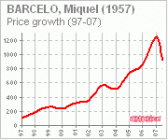
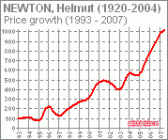
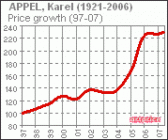
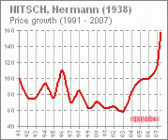
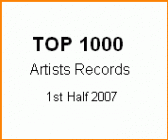
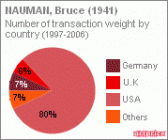
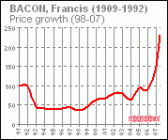
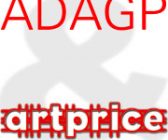
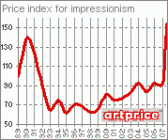
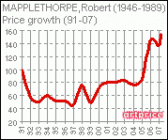
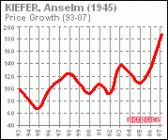

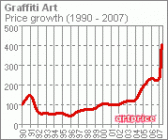
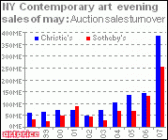
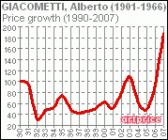
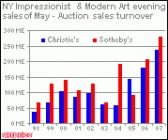

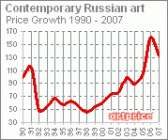

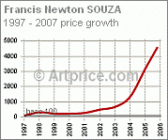
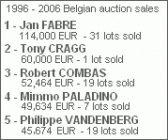


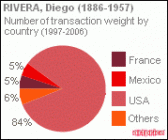
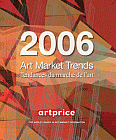

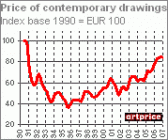

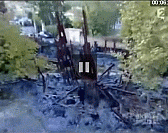
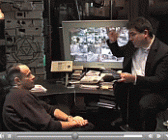








 0
0
